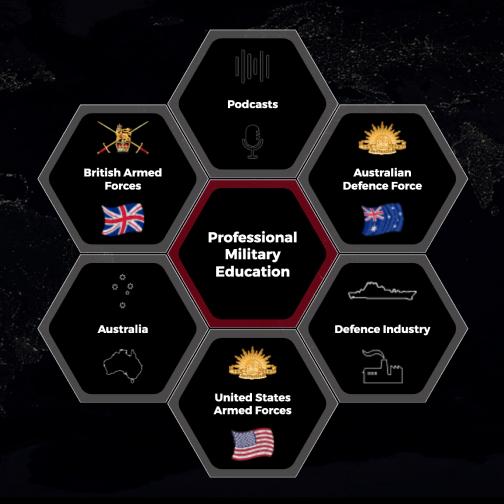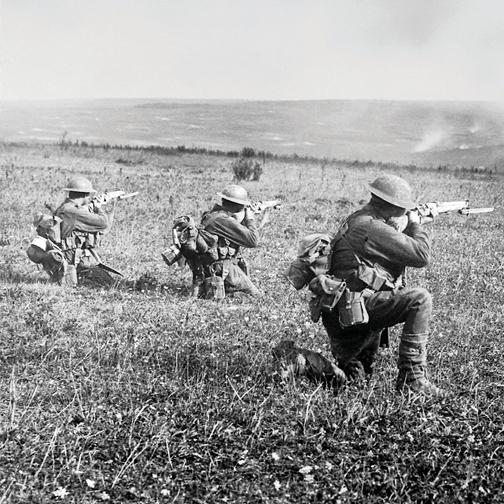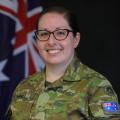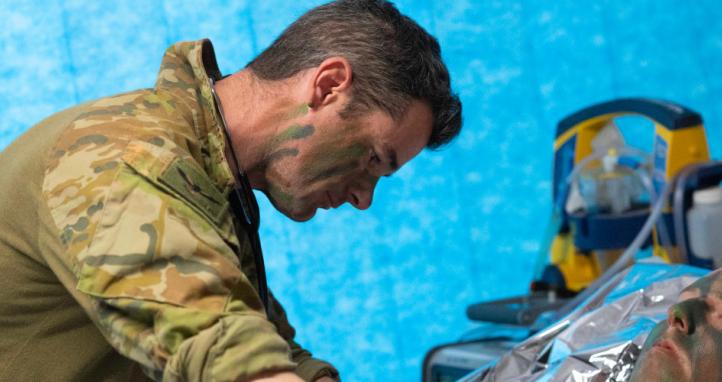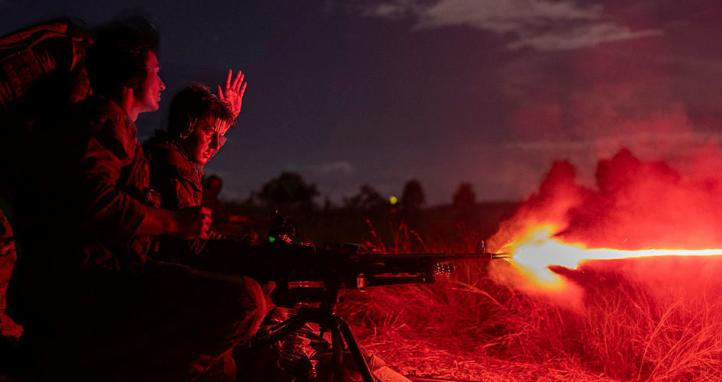If you were to ask the average person about 'military casualties', they would most likely think of soldiers wounded in battle as a direct result of warfare. If you asked the same question of many Defence personnel, you would probably receive a similar response. However, the greatest impact on the health and wellbeing of Australian Defence Force (ADF) members in both peacetime and wartime comes from non-battle injuries sustained through occupational accidents, environmental factors, illness, and disease. Non-battle casualties have made up a significant proportion of ADF casualties in recent conflicts and are an important consideration in health planning – both in combat environments and during training. In this paper, I will discuss non-battle casualties and the importance of addressing this often overlooked aspect of military operations.
Non-battle injuries have increasingly become a significant concern in recent conflicts, reflecting the hazardous and complex environments in which Defence personnel are deployed. In Iraq and Afghanistan, non-battle casualties outnumbered combat-related casualties. Over two-thirds of all casualties among coalition forces in Afghanistan were reported to have been sustained through non-battle causes. While one can draw comparisons between the type of warfare faced in the Middle East and more historical accounts of warfare, this distinction is particularly striking and underscores the range of risks Defence personnel encounter when deployed. The dangers of conflict are not confined to direct combat; they also include the everyday hazards of operating in challenging and austere environments.
When considering the broader implications, each evacuation demands a significant number of resources – both material and personnel. Additionally, including the need to replace the evacuated personnel and the working time lost during their recovery or replacement, a low-resource environment emerges for their section, heightening the hazards faced by their mates due to fatigue and stress.
The perception of 'lingers', or personnel who seek medical attention regularly for perceived non-issues to receive unnecessary restrictions, means fewer members seek medical attention in a timely manner. Combined with a hesitancy to address small health issues due to fear of being back-loaded prematurely, missing an important or exciting task, or a distrust in the assessment of medical personnel, there are a range of missed opportunities for care that could have prevented evacuation. What could have been a sick parade visit and two days off work for one person can quickly turn into an entire section being disabled due to highly contagious gastro or respiratory illness.
The burden of non-battle casualties is shared by all. The US military reported that over 70% of medical evacuations during the same period were due to non-battle injuries. The prevalence of non-battle injuries, particularly those requiring evacuation, underscores the common risks and challenges faced by coalition forces and the importance of strong measures to prevent, detect, and treat non-battle injuries in combat zones.
Operational factors that are challenging to mitigate contribute to the prevalence of accident-related injuries. The nature of modern military operations often requires long hours of patrolling or being on duty, leading to significant fatigue. Additionally, complex movements on foot or by vehicle, along with the handling of heavy equipment, all contribute to the frequency of injuries resulting from personal accidents. For instance, vehicle roll-overs were a major cause of non-battle injuries in Afghanistan. The rough terrain and rapid off-road mobility in hostile areas added to these accidents.
While a sprain might not seem like a severe injury, it can diminish an individual’s capacity to work at full strength for days or weeks. A fracture typically isn't suitable to manage in a combat environment and requires evacuation. Although the next theatre of operation may present new challenges, it's likely that fatigue, complex movements, and vehicle accidents will continue to contribute to non-battle injuries in conflict. Personal strength and endurance training tailored to soldiers' specific duties can help reduce injuries linked to operational factors. Therefore, it is important to engage a Physical Training Instructor who understands the expected physical output of the soldiers and can develop a suitable training program.
Environmental factors contributing to non-battle casualties vary between conflict zones and can change quickly with the seasons or due to natural disasters. While we receive annual reminders about heat illness and injury, along with additional alerts before exercises and deployments, the fatigue mentioned earlier significantly impacts an individual’s ability to self-regulate and care for themselves before a heat-related health crisis. Sunburn, heat exhaustion, and heatstroke are all preventable, yet we must continue to be vigilant against these health risks, regardless of how often we are reminded of their seriousness.
Combine heat with other environmental factors like dust and pollen (which can cause asthma and respiratory issues), humidity and rain (leading to trench foot and various fungal problems), as well as hostile local flora and fauna, and you end up with a melting pot of non-battle casualties that need attention to keep people in the fight. As mentioned earlier, early intervention is less resource-intensive and usually leads to better outcomes – for both the individual and their commander.
Endemic diseases connect to environmental concerns, but they can also present challenges at home. Anyone who's spent time in a training facility knows that gastro and flu can spread like wildfire. Social distancing outdoors may help prevent communicable diseases in camps; however, the lack of proper sanitation and fatigue can worsen what would typically be a minor ailment. Local diseases can be mitigated with vaccinations and chemoprophylaxis, but neither of these methods are foolproof against environmental non-battle casualties. Educating on the importance of taking chemoprophylaxis correctly (e.g., don’t take all your doxycycline tablets at once) and adhering to basic field-appropriate hygiene may help reduce the impacts of endemic diseases through prevention and awareness.
Injuries sustained and illnesses contracted while in service account for a significant proportion of the treatment and ongoing medical care provided to clients of the Department of Veterans Affairs. The concern regarding long-lasting consequences for military personnel is a unique health-related issue. On a macro level, a section that is two members short due to injury or illness experiences strain, and this strain transfers to the remaining members, further impacting their ability to fulfil their roles and obligations.
Given the high incidence of non-battle injuries, it is evident that prevention and effective treatment are crucial for maintaining the health and operability of personnel. Preventative measures include prophylaxis (vaccines and medications), adequate training, adherence to safety protocols where practicable, and strong health surveillance. When an injury or illness occurs, early and effective treatment can lessen the adverse effects of non-battle casualties – both for the individual personally and their family operability.
Utilising healthcare resources early is crucial; however, this is often delayed in the planning process, resulting in unaddressed health effects that fail to meet the needs of the personnel being supported. Having appropriate healthcare resources and suitably trained personnel (both combat and healthcare members) enhances their ability to respond effectively. A significant amount of initial and ongoing training within the various health corps focuses on trauma response, which is essential, as trauma patients can deteriorate quickly, necessitating a rapid response from medical personnel. However, primary healthcare or non-emergency care is frequently overlooked or neglected during training and rehearsals.
It isn't sexy or exciting, and there is a danger that clinicians will dismiss attempts at familiarisation with resources or capabilities unless they are specifically assigned to primary healthcare. The risk in this dismissal is that opportunities for care or prevention are missed, which could lead to an injury or illness that is beyond the treatment scope of their nearest health resource, necessitating evacuation. It is each clinician's responsibility to recognise the importance of primary healthcare and to familiarise themselves with the capabilities they are working from.
Non-battle casualties represent a significant and often underappreciated aspect of military service and the health response in combat operations. For the ADF, as with other coalition forces, these injuries and illnesses are a major source of morbidity, resource utilisation, and resource loss. Modern warfare is changing rapidly, and so must our understanding of the causes of non-battle casualties, as well as the prevention and treatment needed to avert medical evacuation from the combat zone. This includes providing training for individuals and healthcare clinicians, implementing safety protocols, and ensuring constant health surveillance. While primary healthcare may not seem overly exciting to the clinician who joined the ADF to treat battle casualties, it is an essential skill that enables the fighters to remain in the fight.
